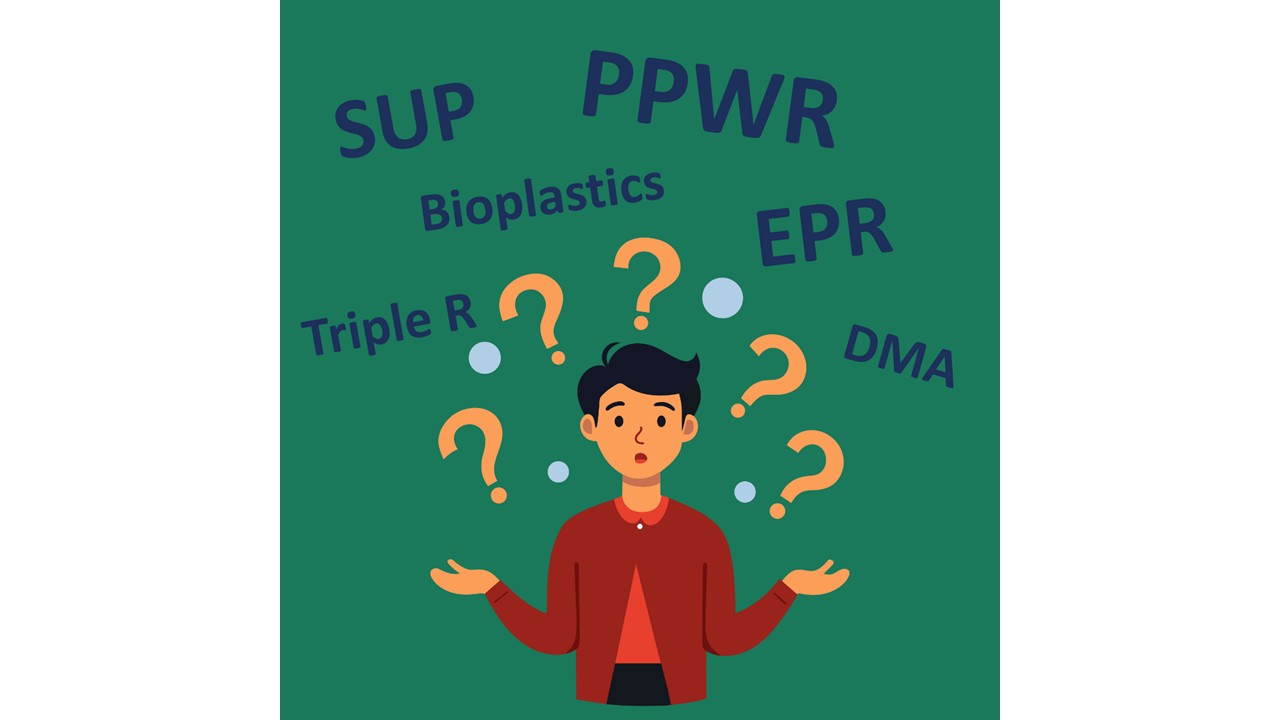Sustainability is a central concern in the packaging industry. Regulatory changes, shifting consumer expectations, and supply chain challenges are accelerating the need for more sustainable approaches. But the growing volume of frameworks, regulations, and terminology can make it difficult to navigate.

Confused by extensive sustainable packaging terminology
This article outlines 11 core terms to help companies gain clarity and stay ahead — both in compliance and in opportunity.
1. PPWR – Packaging and Packaging Waste Regulation
The EU's upcoming PPWR sets requirements for all packaging placed on the EU market. The regulation aims to reduce packaging waste, promote circular economy models, and mandate recyclability, use of recycled content, and restrictions on certain packaging types by 2030.
2. CSRD - Corporate Sustainability Reporting Directive
This EU directive requires large and listed companies to publicly report on their environmental and social impact. It aims to improve the transparency, quality, and consistency of sustainability data in the market.
3. DMA - Dubbel-Materiality Assessment
Under CSRD, businesses must conduct a Double Materiality Assessment to identify:
- How their activities impact the environment and society.
- How sustainability risks and opportunities affect their business financially
4. LCA - Life-Cycle Assessment
A Life Cycle Assessment evaluates a product’s total environmental impact: from raw material extraction to disposal. It’s a valuable tool for comparing packaging options objectively.
5. EPR - Extended Producer Responsibility
This policy framework shifts the responsibility for post-consumer waste management from governments and consumers to producers. It encourages eco-design and is increasingly embedded in national legislation across Europe.

Infographic about Extended Producer Responsibility
6. Bioplastics, bio-based and biodegradable materials
- Bioplastics are plastics made partly or fully from renewable biological sources like corn or sugarcane.
- Bio-based materials come from natural, renewable resources but aren’t always plastics (e.g., paper, bamboo).
- Biodegradable materials are those that can break down naturally into harmless substances, whether they’re made from plants or fossil fuels. Not all bio-based materials are biodegradable and vice versa.
7. Circularity and the (Triple) R-strategies
The R-strategies are a set of actions that promote a more circular economy by prioritizing waste reduction and resource efficiency. The expanded R-strategies include: Refuse, Rethink, Reduce, Reuse, Repair, Refurbish, Remanufacture, Repurpose, Recycle, Recover.
"Triple R" typically narrows it down to the principles of Reduce, Reuse, and Recycle, which are fundamental strategies for managing waste and promoting sustainability. These three actions, when applied in this order, help minimize environmental impact by reducing consumption, extending product lifespans, and diverting materials from landfills.
8. Carbon footprint, CO2-equivalent (CO2e) and Net Zero
- The carbon footprint is the total amount of greenhouse gas emissions from a product or process. This metric is used internally and externally to track progress, set goals, and visualize performance.
- CO₂e emissions stand for CO₂ equivalent emissions, a measure that converts the emissions of all greenhouse gases (including for instance methane) to an equivalent value of CO₂. This simplifies comparison and measurement.
- Net zero is the ambition to achieve a net balance between emissions produced and emissions removed from the atmosphere, linked to our activities. This can be achieved through a combination of reducing our direct emissions from our activities (eg transport), collaborating with suppliers and customers to reduce indirect emissions, and offsetting the (unavoidable) remaining emissions through capture models, renewable investments, or regenerative projects.
9. Recycled and recyclable materials
- Recycled materials are made from waste that has already been processed and turned into new products (e.g., glass bottles made from old glass).
- Recyclable materials are those that can be collected and reprocessed, but only if the right systems and facilities exist. So, glass and many plastics are recyclable, but they only become recycled if they actually go through the recycling process.
10. SUP or Single-Use Plastics
The EU SUP Directive restricts single-use plastic items where alternatives are available. This includes cutlery, straws, plates and cups. Reducing single-use plastics is a key component of broader circular economy goals.
11. Mono-material packaging
Packaging made from a single material (e.g. 100% PET or 100% glass) improves recyclability and sorting efficiency. It’s designed to improve recyclability without reducing product protection. Under the upcoming EU PPWR the use of mono-materials is encouraged because it helps meet recyclability targets and supports a circular economy.
The transition to more sustainable packaging brings both regulatory pressure and opportunity. The implementation of the PPWR is inevitable and will have a major impact on the sector. Only through timely action, shared knowledge and cooperation within the sector can organisations meet the new requirements and at the same time contribute to accelerating the transition to circular packaging.
GAASCH PACKAGING is committed to drive sustainable packaging through innovation and responsibility, now more than ever. In doing so, we aim to support our customers with practical, scalable solutions that align with new regulations, market expectations and environmental standards. Our role in the packaging value chain comes with the opportunity to help reduce impact, support circularity, and enable our customers to meet their goals.
Read more about our commitment on our sustainability page here: SUSTAINABILITY
Curious to know the impact on your packaging? Let’s explore your options together. Contact us for a packaging audit.

